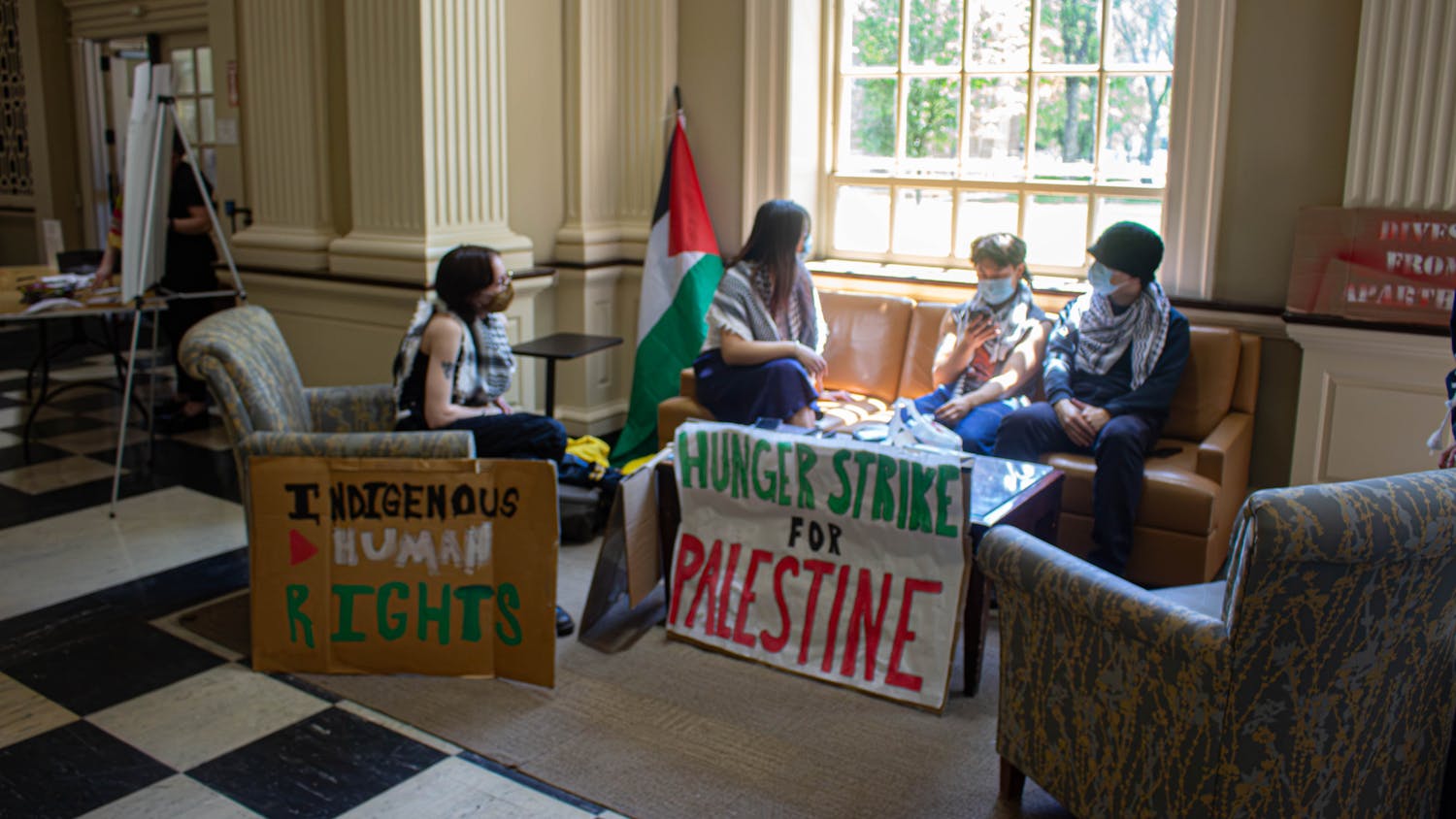While the Republican presidential candidates discussed their plans to address the struggling U.S. economy in Spaulding Auditorium, reporters from publications across the world gathered in the Hopkins Center to cover the debate. Sitting at 12 rows of tables placed in front of 13 flat-screen televisions streaming the action live, reporters worked during and after the debate to capture each candidate's views and their significance in the broader context of the primary race and the 2012 general election.
Alumni Hall functioned as the "filing room," where reporters jotted down observations, transcribed speakers' quotes and submitted their stories. The Top of the Hop was transformed into the "spin room" in which reporters conversed with members of candidates' campaigns and several of the candidates themselves following the debate, according to Justin Anderson, director of media relations for the College.
Reporters flew in from all across the country, representing major media outlets such as The New York Times and NBC News. The debate, sponsored by the College, The Washington Post, Bloomberg News and local media outlet WBIN-TV, also garnered the attention of international media. Representatives from French and Japanese television networks traveled to campus to capture the candidates' excitement, according to Anderson.
Any reporter with a press pass could enter the Top of the Hop to watch the debate on a live feed from Spaulding Auditorium, but the seats in Alumni Hall were assigned to specific reporters. While over 300 reporters requested media credentials to allow them to cover the debate, only 170 individuals received spots in the filing room, according to Anderson. Most reporters sat in the filing room during the debate and moved onto the spin room afterwards, Anderson said.
Although reporters sat together by publication, they wrote stories and updated blogs individually and relatively quietly throughout the debate. Younger reporters wearing button-down shirts with rolled-up sleeves sat typing next to older reporters in dark suits.
As the reporters initially settled in, the tapping of keyboards was accompanied by hushed chatter and occasional sprinkles of laughter when candidates counted aloud to five for their sound checks.
As soon as debate moderator Charlie Rose began to speak, however, all talk was quickly silenced and replaced by the soft flurry of typing. The reporters in the filing room reacted to candidates' responses to questions more outwardly than most debate audience members, occasionally contributing guffaws of incredulity when businessman Herman Cain theatrically proposed his 9-9-9 plan or rebuked moderator and Bloomberg Television White House correspondent Julianna Goldmann, telling her that the problem with her analysis of his plan to fix the economy "is that it's wrong."
In response, one reporter shouted, "Thanks for clearing that up, dude."
Murmurs of surprise and frantic typing ensued when former Sen. Rick Santorum, R-Penn., said he would not be opposed to starting a trade war with China.
In addition to the print and online reporters covering the debate, cameramen from The Post and Bloomberg captured the atmosphere of the filing room.
Following the debate, newspaper reporters armed with handheld recorders and accompanied by television crews entered the spin room to speak with campaign managers.
Reporters typically enter the spin room in search of a particular campaign's reaction to the debate, Jesse Benton, campaign chairman for Rep. Ron Paul, R-Texas, said in an interview with The Dartmouth.
Reporters initially surrounded the campaign managers for Cain and former Gov. Mitt Romney, R-Mass., looking for comments from the two candidates who most pundits agreed dominated the debate. Media coverage then dispersed as candidates entered the room. The appearance of former Gov. John Huntsman, R-Utah, and Santorum reinvigorated the atmosphere in the spin room, with reporters crowding around these candidates to get their take on the two-hour debate that occurred just moments prior.
Hours after the debate had ended, reporters still filled half of the filing room as they raced to finish their stories on deadline and updated their online new outlets with additional information.
The Hopkins Center setup was "typical" for high-profile political debates, Megan Carpentier, executive editor of the news website Raw Story, said in an interview with The Dartmouth. When debates take place in relatively low-capacity rooms like Spaulding Auditorium, reporters usually gather in a separate filing room, Carpentier said. Spaulding Auditorium seats 900 people, according to the Hopkins Center website.



